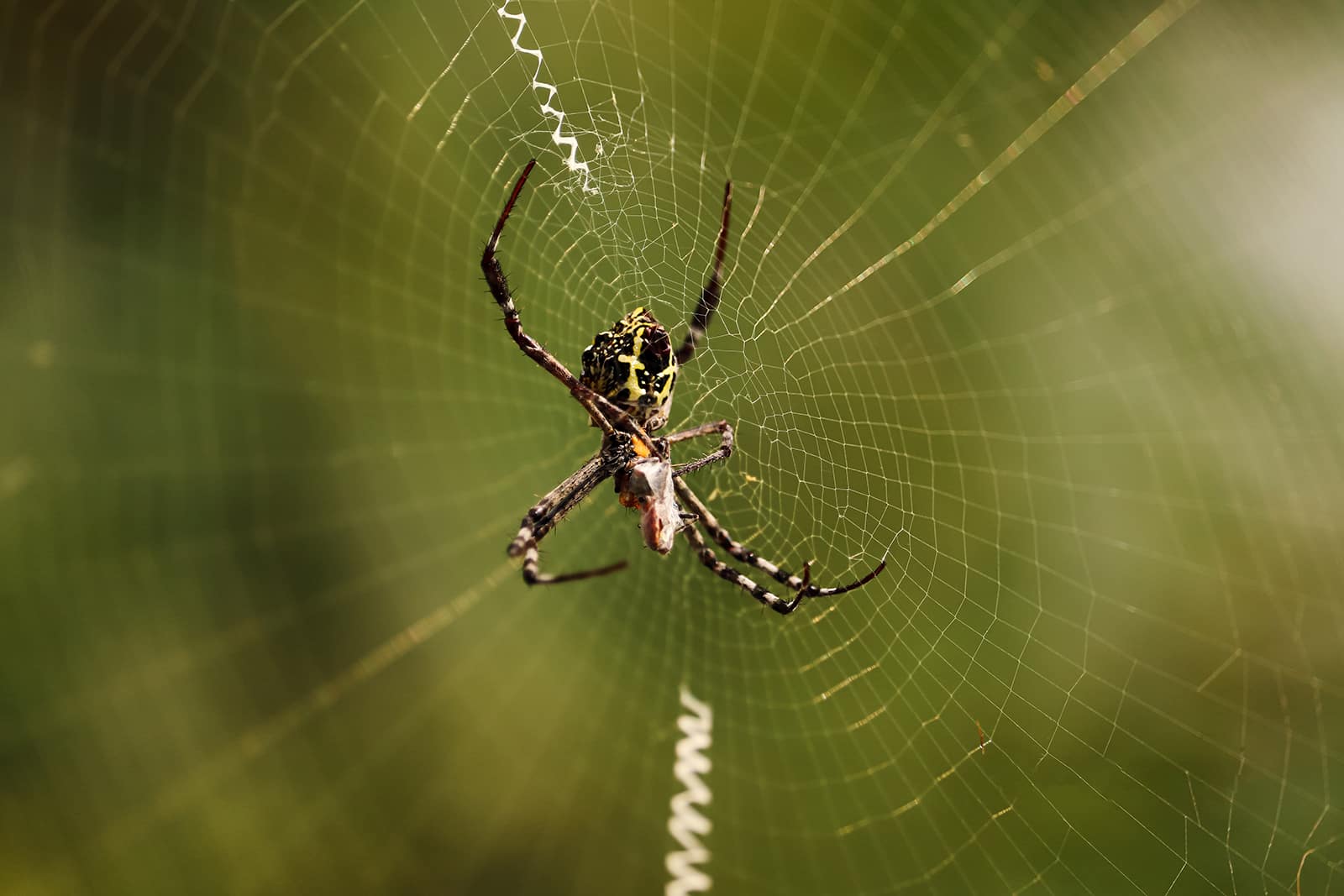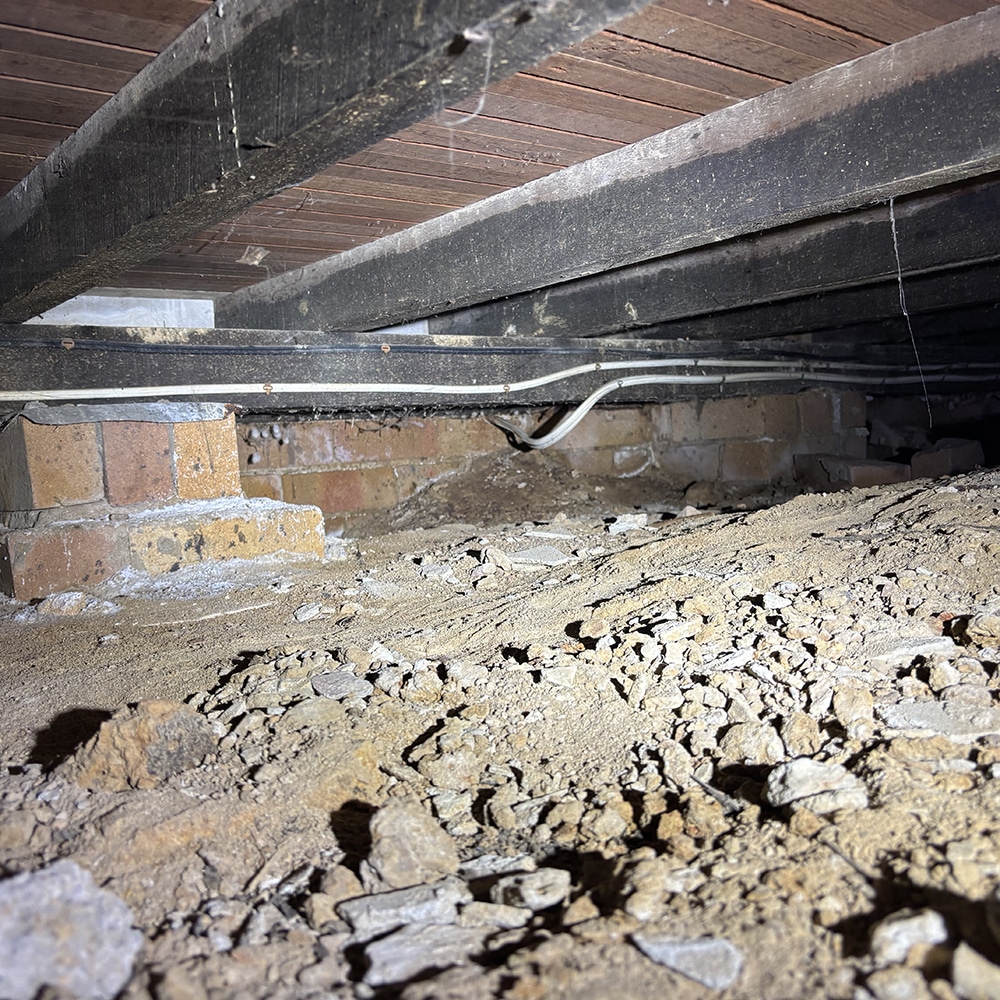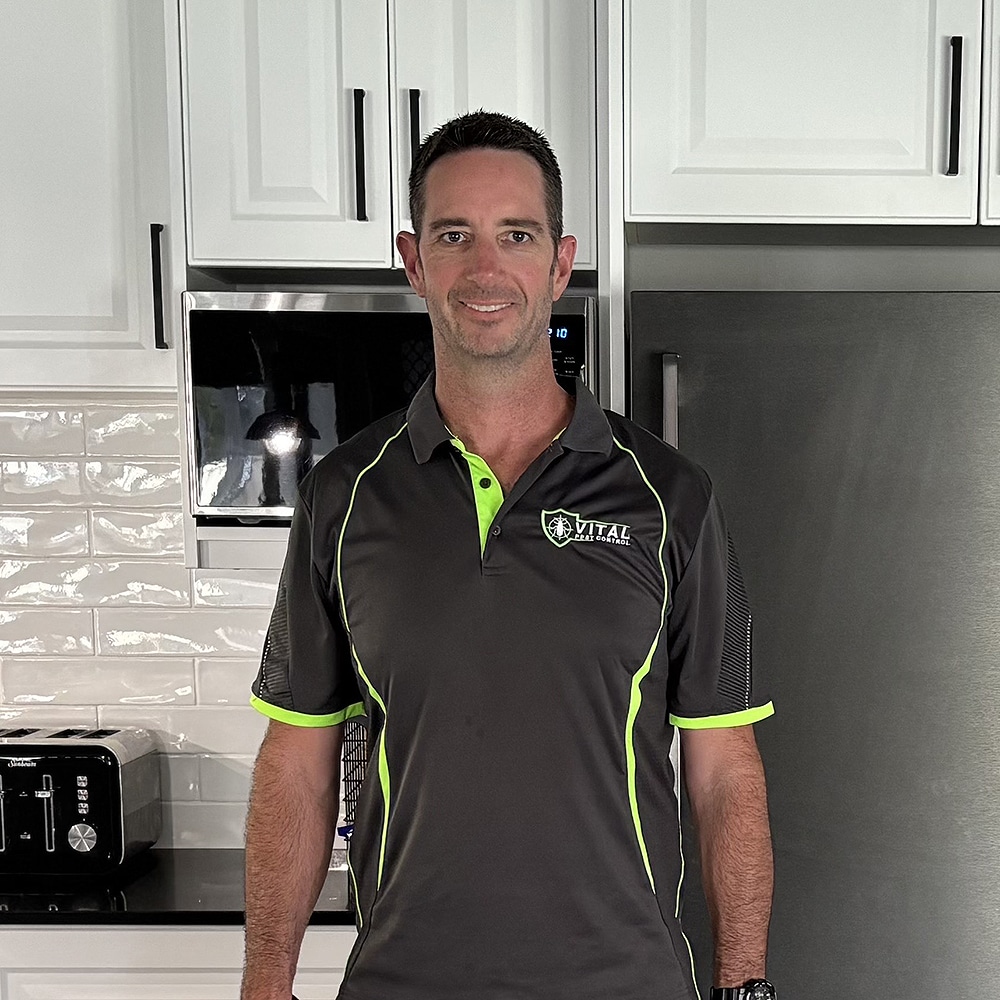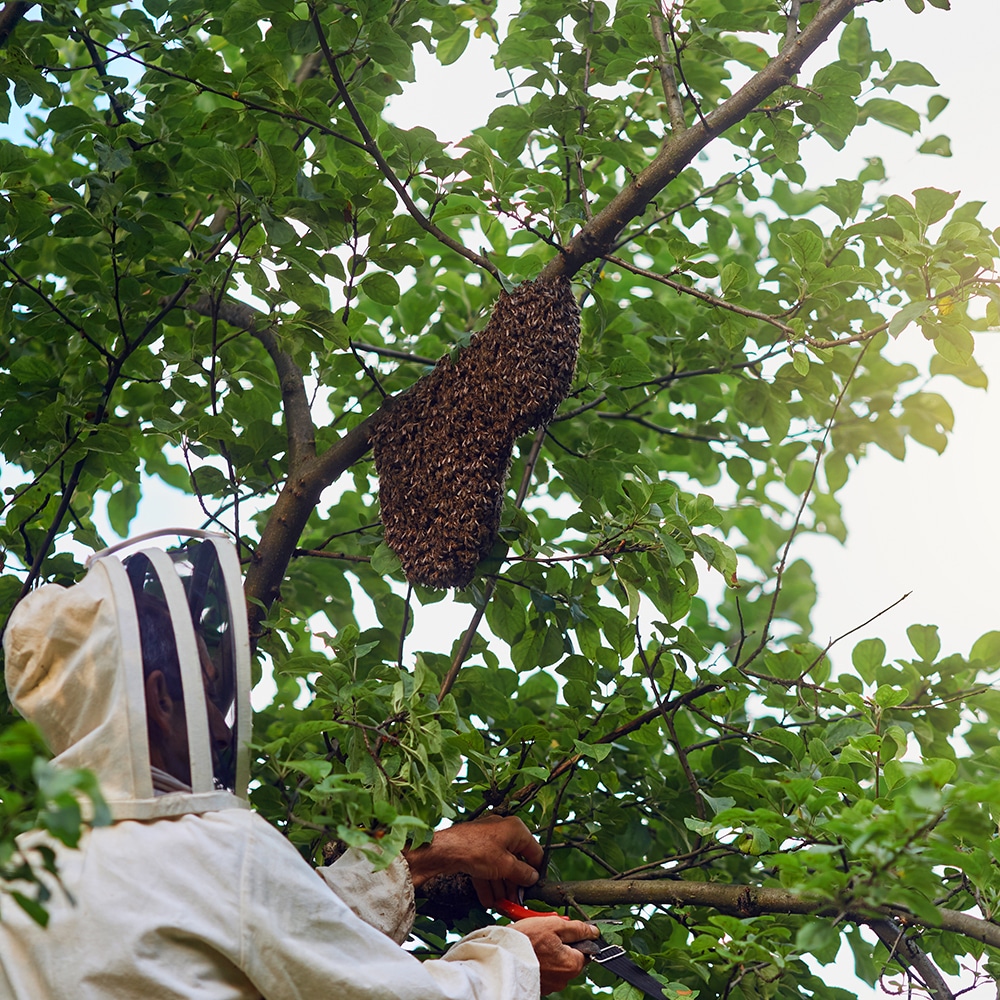
Why Do Spiders Come Back And Why
Why Do Spiders Come Back And Why On The Central Coast NSW. Responsive Proactive Solutions. Detail-focused for lasting results. Call Adam on 0431 222 894
Key Residential Pest Control Essentials are crucial for maintaining a healthy home in Central Coast NSW. With pests being a common issue, it’s important to take proactive measures. At Vital Pest Control, we have the expertise to help you tackle these pesky invaders with effective strategies.
Identifying Common Home Invaders
Recognising household pests is the first step in pest control. Cockroaches, spiders, and ants are frequent visitors. Knowing your enemy helps in choosing the right treatment and prevention methods.
Scheduling Regular Inspections
Regular inspections can prevent infestations before they start. They are reliable and help maintain a pest-free home. Schedule them to catch early signs and save future headaches.
Safe Pesticide Application
Applying pesticides safely is essential for your family’s wellbeing. Always follow guidelines and opt for environmentally friendly products. This practice keeps your home safe while tackling pests effectively.
Sealing Foundation Cracks
Cracks in your home’s foundation can be entry points for pests. Sealing them is a fast and responsive solution to block these unwanted guests. It also helps in maintaining the structural integrity of your home.
Maintaining Cleanliness
Cleanliness is a simple yet vital aspect of pest control. Regular cleaning routines reduce attractants for pests. A tidy home minimises the chances of infestations, keeping your space healthy.
Choosing Child Safe Treatments
Child-safe treatments ensure the health of your little ones. Select products designed for families to avoid harmful chemicals. These solutions provide peace of mind while effectively managing pests.
Excluding Pets from Treated Areas
Pets should be kept away from treated areas to avoid exposure. Ensure they are safe by restricting access to these zones. This protects their health while allowing treatments to work effectively.
Storing Food Properly
Proper food storage is crucial to prevent attracting pests. Use airtight containers and keep pantry areas clean. This practice is quality over quantity in pest prevention, ensuring a hygienic kitchen.
Discover how we can help you today! Visit our website for more information and Contact us.

Living in Central Coast NSW brings the beauty of nature right to your doorstep. However, it also means dealing with common pests that invade homes. Identifying these invaders is crucial for effective pest control. This guide will help you recognise the usual suspects, making it easier for Vital Pest Control to keep your home comfortable and pest-free.
Cockroaches
Cockroaches are notorious for their resilience and rapid reproduction. These pests thrive in warm, humid environments and are often found in kitchens and bathrooms. Their presence can trigger allergies and spread bacteria, making them a priority for eradication. Look for droppings, egg cases, and an unpleasant, musty odour as signs of infestation.
Ants
Ants enter homes searching for food and water. They often form trails leading to food sources, making them easy to spot. While some ants are harmless, others, like the carpenter ant, can damage wooden structures. Addressing ant invasions promptly prevents them from becoming unmanageable.
Spiders
Spiders, though beneficial in controlling other insect populations, can become a nuisance indoors. Species like the redback spider pose risks with their venomous bites. Spiders often inhabit dark, undisturbed areas such as corners and storage spaces. Regular cleaning and sealing entry points can help manage their presence.
Rodents
Rodents, including rats and mice, are unwelcome guests that can cause significant damage. They chew through wires, spread disease, and contaminate food. Signs of a rodent problem include droppings, gnaw marks, and scurrying noises. Effective control involves sealing entry points and setting traps.
Regular inspections are key in managing pest control for homes on the Central Coast of NSW. These inspections help identify potential infestations early, preventing costly damage and ensuring a safe living environment. By scheduling consistent checks, homeowners can maintain a pest-free zone and protect their properties effectively.
Identifying Early Signs of Infestation
Spotting pests early is crucial in controlling their spread. Regular inspections help in detecting subtle signs like droppings, gnaw marks, or nests, which might otherwise go unnoticed. Early intervention can prevent minor issues from escalating into extensive infestations, saving time and money in the long run.
Preventing Structural Damage
Pests like termites and rodents can cause significant structural damage if left unchecked. Regular inspections help in identifying these threats before they compromise the integrity of a home. By catching these pests early, homeowners can avoid costly repairs and maintain the value of their property.
Maintaining Health and Safety
Pests can pose serious health risks to residents, spreading diseases and allergens. Regular inspections ensure that homes remain safe and hygienic by promptly addressing any pest-related issues. This proactive approach helps protect the wellbeing of all household members.
Peace of Mind for Homeowners
Scheduled inspections offer peace of mind, knowing that any pest issues will be managed promptly and efficiently. Homeowners can enjoy their living spaces without the worry of unexpected infestations, ensuring a comfortable and secure environment.
Ensuring safe pesticide application is crucial for effective pest control on the Central Coast, NSW. With residential environments often hosting families and pets, it’s vital to prioritise safety while maintaining efficiency in pest management. Homeowners should be aware of the best practices to protect their living spaces from unwanted pests without compromising health.
Understanding Pesticide Labels
Reading pesticide labels thoroughly is essential. They provide critical information about proper usage, safety precautions, and specific pests targeted. Homeowners must follow these guidelines to avoid overapplication, which can lead to health risks and environmental harm.
Choosing the Right Equipment
Using appropriate equipment for pesticide application ensures even distribution and prevents accidental exposure. Protective gear, such as gloves and masks, minimises contact with chemicals. Sprayers should be well-maintained to prevent leaks and ensure precise application.
Timing and Conditions
Applying pesticides during optimal weather conditions enhances effectiveness and safety. Windy or rainy days can cause drift, affecting non-target areas and reducing the pesticide’s efficacy. Early morning or late afternoon applications often yield the best results, with minimal risk of evaporation.
Safe Storage and Disposal
Proper storage and disposal of pesticides are vital to prevent accidental exposure. Store chemicals in a secure, cool, and dry place, out of reach of children and pets. Follow local regulations for disposing of unused pesticides and containers, and never pour them down drains or into the environment.
Sealing foundation cracks is crucial for effective pest control on the Central Coast of NSW. These cracks can be an open invitation to unwanted pests. Addressing them not only strengthens your home’s foundation but also acts as a deterrent to infestations.
Identifying Problem Areas
Before sealing, identify all potential entry points. Thoroughly inspect your home’s exterior for visible cracks, holes, or gaps. Pay extra attention to areas near pipes and vents as these are common entryways for pests. Catching these early can prevent future infestations.
Choosing the Right Sealant
Not all sealants are created equal. Consider environmental conditions on the Central Coast when selecting a product. Silicone-based sealants are durable and flexible, making them ideal for fluctuating temperatures. Always opt for a sealant that can withstand moisture to ensure long-lasting protection.
Proper Application Techniques
Applying sealant correctly is essential. Clean the area thoroughly to ensure the sealant adheres properly. Fill the crack completely, smoothing it out for a seamless finish. Allow adequate drying time before exposing the area to the elements. This ensures the sealant forms a strong barrier against pests.
Sealing foundation cracks effectively prevents pests from finding a way inside. By taking these steps, homeowners on the Central Coast can maintain a pest-free environment and protect their property’s structural integrity.
Maintaining cleanliness is crucial for effective pest control on the Central Coast, NSW. A clean home environment can deter pests, ensuring a healthier and safer living space. Regular cleaning routines can significantly reduce the risk of infestations, saving homeowners from potential damage and health risks.
Regular Waste Management
Proper waste management is vital in keeping pests at bay. Ensure rubbish bins are tightly sealed and emptied regularly to prevent attracting pests like rodents and cockroaches. Organic waste should be composted or disposed of promptly, avoiding accumulation that can serve as a food source for pests.
Kitchen Hygiene Practices
A clean kitchen is essential for pest control. Wipe down surfaces after use, and ensure food crumbs are promptly cleaned to prevent attracting ants and other pests. Regularly check and clean behind appliances where food particles might accumulate unnoticed.
Bathroom and Laundry Cleanliness
Bathrooms and laundries should be kept dry and clean to deter pests like silverfish and mould. Regularly check for leaks and repair them quickly to avoid excess moisture build-up. Use mould-resistant products where possible to maintain a pest-free environment.
Outdoor Area Maintenance
Maintaining a clean and tidy outdoor area can prevent pests from entering the home. Regularly mow the lawn, trim overgrown plants, and remove standing water to discourage insects and rodents from nesting near the house.
When selecting pest control solutions for your home on the Central Coast NSW, it’s vital to consider treatments that are safe for children. Ensuring your family’s health while tackling pest issues is paramount. With the right approach, you can maintain a safe living environment without compromising on effectiveness.
Understanding Chemical-Free Options
Exploring chemical-free pest control is a great starting point. These treatments rely on natural ingredients and methods, reducing potential harm to children and pets. Products like diatomaceous earth or essential oil sprays can effectively deter pests without the harshness of traditional chemicals.
Professional Pest Control Expertise
Engaging professional pest control services familiar with child-safe methods ensures thorough and safe treatment. Experts can assess your home, identifying pest hotspots and tailoring solutions that prioritise safety. Their knowledge of the latest child-safe products offers peace of mind.
Regular Home Maintenance
Incorporating regular maintenance practices can significantly reduce pest problems. Seal cracks, fix leaks, and manage waste effectively to prevent attracting pests. Simple habits like these minimise the need for frequent treatments, aligning with child-safe strategies.
Education and Awareness
Educating yourself and your family about pest prevention is crucial. Understanding the behaviours and habitats of common pests empowers you to take proactive steps. Knowledgeable families can implement child-safe practices, reducing reliance on chemical treatments.
When dealing with pest control at home, ensuring pets are safe is crucial. On the Central Coast of NSW, Vital Pest Control emphasises pet safety during treatments. Understanding how to protect pets can help homeowners manage pest issues without risking their furry friends.
Understanding Treatment Risks
Pest control treatments often involve chemicals that can harm pets if ingested or inhaled. Pets might explore treated areas, especially curious cats and dogs. Recognising these risks is vital for their well-being. Vital Pest Control uses pet-friendly methods, but temporary exclusion from treated zones is a wise precaution.
Preparing Safe Zones
Before treatment begins, create a safe zone for pets. This could be a closed-off room or an outdoor area away from treatment sites. Ensure the zone is comfortable, with food, water, and toys. Leaving them here during and after treatment allows chemicals to settle, reducing exposure.
Post-Treatment Precautions
After pest control services, wait for the recommended time before allowing pets back into treated areas. This pause ensures any potential residues have dissipated. Always follow the advice of professionals like Vital Pest Control, who provide guidance on safe re-entry times for pets.
Proper food storage is crucial for effective pest control on the Central Coast of NSW. Without it, homes can become a haven for rodents, insects, and other unwanted pests. Storing food correctly not only keeps it safe for consumption but also plays a key role in residential pest control.
Airtight Containers
Using airtight containers is an effective way to keep pests at bay. Foods like cereals, flour, and pet food should be stored in containers with tight-fitting lids. This prevents pests from detecting food scents and gaining access. Airtight storage limits the chances of infestations, thus reducing the need for chemical pest control measures.
Regular Pantry Checks
Regularly inspecting your pantry can help spot any signs of pest activity early. Look for holes in packaging, droppings, or an unusual smell. Prompt action can prevent a minor issue from becoming a major infestation. Keep your pantry clean by wiping surfaces and removing expired food regularly.
Refrigeration Practices
Refrigating perishable items like fruits, vegetables, and meats is essential. Cold temperatures inhibit pest activity and prevent spoilage. Ensure your fridge is set to the correct temperature and check seals to keep out any opportunistic pests. This simple step can significantly enhance your pest control efforts.
Living on the Central Coast NSW offers a beautiful lifestyle, but it also means dealing with various pests. One effective way to keep these unwanted guests at bay is by using screens on windows and doors. This simple yet impactful strategy forms a crucial part of residential pest control. Screens serve as a barrier against insects while allowing fresh air to circulate, making them a smart choice for homeowners.
Enhanced Protection
Screens act as the first line of defence against pests like mosquitoes and flies. When properly installed, they create a physical barrier that prevents these nuisances from entering your home. This is especially important during warmer months when windows and doors are often left open to enjoy the breeze. Ensuring your screens are in good repair can significantly reduce the number of pests indoors.
Improved Airflow
Beyond pest control, screens offer the added benefit of improved airflow. They allow you to leave windows and doors open without the worry of pests invading your space. This not only keeps your home cooler but also reduces the need for air conditioning, potentially lowering energy bills. With screens, you can enjoy the best of both worlds: fresh air and a pest-free environment.
Durability and Maintenance
Modern screens are designed for durability and easy maintenance. Many are made from materials resistant to wear and tear, ensuring they last longer. Routine cleaning and inspections can extend their lifespan, providing long-term protection against pests. By investing in quality screens, you enhance your home’s defence against unwanted intruders.
Homeowners on the Central Coast NSW need reliable pest control strategies to protect their property. Setting reminders for vital pest control tasks ensures timely action, preventing infestations before they become serious. Regular maintenance and timely interventions are key to safeguarding your home from unwanted intruders.
Importance of Scheduled Inspections
Regular inspections play a crucial role in early pest detection. By scheduling reminders for these inspections, homeowners can ensure timely identification of potential pest issues. Early detection often means simpler and more cost-effective solutions. This proactive approach helps maintain a pest-free environment, ensuring your property remains comfortable and safe.
Seasonal Pest Control Actions
Different seasons bring varied pest challenges. Setting reminders for seasonal pest control treatments helps address these unique challenges effectively. For instance, summer may require more focus on ants, while winter might demand rodent control. Tailoring your pest control efforts to the season maximises effectiveness and minimises the risk of infestations.
Utilising Technology for Reminders
Technology offers simple solutions for managing pest control schedules. Using apps or calendar alerts ensures you never miss a critical pest control task. These digital tools can help track treatments, inspections, and seasonal tasks, making it easier to stay organised and proactive in your pest management efforts.
On the Central Coast NSW, maintaining a pest-free home is crucial, yet the overuse of chemicals can pose risks to both health and the environment. Finding a balance in pest control methods is key to ensuring the safety of your family and the surrounding ecosystem.
Understanding Natural Pest Deterrents
Exploring natural deterrents can reduce reliance on chemicals. Use plants like lavender and mint, which naturally repel pests. Essential oils, such as eucalyptus and tea tree, can also be effective when applied correctly. These options offer a safer alternative without compromising on pest control effectiveness.
Implementing Integrated Pest Management
Integrated Pest Management (IPM) is a strategic approach that combines various methods to control pests. IPM focuses on long-term prevention through techniques like habitat manipulation and biological control. By using IPM, you minimise chemical use, targeting only when necessary and promoting a healthier environment.
Regular Maintenance and Monitoring
Keeping your property well-maintained is crucial for pest prevention. Regularly inspect for signs of infestations and address issues promptly. Seal entry points, repair leaks, and clean up debris to deter pests naturally. Consistent monitoring helps catch potential problems early, reducing the need for chemical treatments.
Handling minor infestations promptly is crucial for maintaining a pest-free home on the Central Coast of NSW. Ignoring early signs can lead to larger problems, causing damage and increasing costs. Quick action not only protects the property but also ensures the safety and comfort of residents.
Identifying Early Signs
Spotting the first signs of pests is key. Look for droppings, bite marks, or unusual sounds in the walls. These indicators often point to a developing infestation. Regular checks, especially in kitchens and basements, can catch pests before they multiply.
Using Natural Remedies
Natural solutions can effectively manage small pest issues. Ingredients like vinegar and essential oils repel many insects. Setting up traps or using diatomaceous earth can also control pests without harsh chemicals, making it a safer choice for families and pets.
Contacting Professionals
When in doubt, contacting a professional pest control service ensures comprehensive treatment. Experts have the knowledge and tools to identify the extent of an infestation and provide targeted solutions. This step is vital for preventing minor issues from escalating.
Regular Maintenance
Consistent home maintenance is essential. Seal cracks, fix leaks, and maintain cleanliness to deter pests. These practices not only address current problems but also prevent future infestations, keeping your home on the Central Coast pest-free.
Monitoring pest droppings is crucial for effective pest control on the Central Coast of NSW. This practice helps identify which pests are present and assess the extent of an infestation. Understanding droppings can guide homeowners and pest control professionals in selecting the best treatment strategies. By staying vigilant, residents can protect their homes from damage and maintain a healthy living environment.
Identifying Pest Types
Each pest species leaves distinct droppings. For instance, rodent droppings are small and dark, resembling rice grains, while cockroach droppings appear as black specks. By recognising these differences, homeowners can accurately identify the type of pest invading their space. This knowledge is vital in choosing the most suitable pest control method, ensuring more effective results.
Assessing Infestation Levels
The quantity and location of droppings indicate infestation severity. A large number of droppings in concentrated areas suggests a significant pest presence, while sporadic sightings may hint at a minor issue. By mapping out where droppings appear, homeowners can pinpoint pest hotspots, allowing for targeted control measures that are both efficient and cost-effective.
Preventive Measures
Regular monitoring of pest droppings enables early detection of new infestations. By frequently checking common areas like kitchens and basements, residents can address problems before they escalate. This proactive approach not only saves on costly repairs but also ensures a safer, pest-free home environment. Addressing the issue promptly can lead to long-term peace of mind for homeowners on the Central Coast.
The Central Coast of NSW is a region where pest control is not just a necessity but a vital practice to maintain a healthy living environment. Documenting sightings can play a pivotal role in this process, offering insights into infestation patterns and helping in the efficient management of pests.
Understanding Pest Behaviour
Documenting each sighting can reveal patterns in pest behaviour. Noting the time, location, and frequency of sightings helps identify nesting areas and entry points. This information is crucial for implementing targeted control measures. By understanding these patterns, pest control strategies can be more effective and less intrusive.
Improving Pest Control Methods
Regularly recording sightings allows pest control professionals to refine their methods. They can adjust traps and baits based on where pests are most active. This data-driven approach ensures that treatments are applied where they are needed most, maximising efficiency and reducing unnecessary exposure to chemicals.
Preventative Measures
Keeping a detailed log of pest sightings helps in the early detection of potential infestations. By identifying trends over time, homeowners can take proactive steps to prevent future issues. This might include sealing entry points or altering landscaping to deter pests, thereby maintaining a pest-free environment on the Central Coast.
Budgeting for yearly prevention in pest control is crucial for homeowners on the Central Coast, NSW. It ensures that properties remain protected from unwanted invasions, which can lead to costly damage and health risks. By planning ahead, residents can maintain a pest-free home throughout the year without breaking the bank.
Understanding Costs
Understanding the costs involved in pest control is the first step in budgeting. Services can range from basic inspections to more complex treatments tailored to specific pest issues. Knowing what services are necessary for your home can help allocate funds effectively. Regular inspections and preventive measures are often more cost-effective than dealing with infestations.
Seasonal Pest Trends
Seasonal pest trends on the Central Coast should influence your budget planning. Certain pests are more active during specific times of the year. Anticipating these trends helps in scheduling preventive treatments ahead of time, which can often be more affordable than emergency responses.
Annual Contracts
Consider annual contracts with local pest control services. These contracts often offer discounts and spread costs over the year, making budgeting easier. They usually include regular check-ups and treatments, ensuring consistent protection and peace of mind.
DIY Prevention Tips
Incorporating DIY prevention tips can reduce professional service frequency. Simple actions like sealing entry points or maintaining cleanliness can be effective. This proactive approach not only supports professional efforts but also keeps your budget in check.
Please leave your details in the form and we will call you back the same day.
So that we can process your enquire efficiently please leave as many details as possible and upload any relevant images. (.jpg and .png format)

Why Do Spiders Come Back And Why On The Central Coast NSW. Responsive Proactive Solutions. Detail-focused for lasting results. Call Adam on 0431 222 894

Building a Long Term Residential Pest Protection Plan For Home Owners On The Central Coast NSW. Responsive Proactive Solutions. Detail-focused for lasting results. Call Adam on 0431 222 894

How to Protect Your Home from Wasp Infestations On The Central Coast NSW. Responsive Proactive Solutions. Detail-focused for lasting results. Call Adam on 0431 222 894